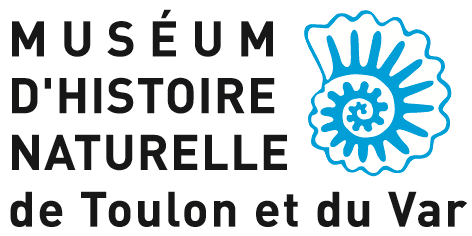
Natural History Museum of Toulon and Var
As part of its duties, the Natural History Museum of Toulon and Var (MHNTV) keeps unique botanical collections of historical, scientific, and aesthetic interest. Herbaria pieces mostly come from the French Mediterranean area, especially from Var and Provence, but also from Northern Africa.
The herbaria cover a period going from 1760 to present days; almost all of them were donated. The number of specimens is estimated at 45,300. Those collections are divided into 4 categories:
- 14 Tracheophytes herbaria (86.5%) ;
- 7 Cryptogams herbaria (10.9%): bryophytes, lichens and algae;
- 3 Mycological herbaria (2.2%) ;
- The dry fruits and dry wood collections (0.4%).
The MHNTV possesses herbaria from renown botanists that marked the botanical history of the Var :
- Historical Herbaria: Louis Gérard, Abel Albert (with over 500 pieces from Émile Jahandiez), Léon Mercurin, Paul Lamar, Baron de Fonscolombe, André de Crozals, and Marcellin Mouret ;
- Modern Herbaria: Roger Cruon & Yvette Orsini.
Among the preserved tracheophytes Herbaria, the Museum has the privilege of keeping the pre-linnean herbarium of doctor/botanists Louis Gérard (1733-1819), that he composed himself throughout his life. It is undeniable that Gérard relied on his herbarium to write the first flora of Provence (in Latin), Flora Gallo Provincialis published in 1761. This herbarium, composed of 3,476 pieces has a significant patrimonial value, especially for its technical and cultural aspects. Sadly, from a strict scientific point of view, this collection is hard to properly utilize: diagnoses (in Latin) used to describe plants are obsolete, and the labels have barely any indication of areas or date (less than 50 pieces).
The quite nice Léon Mercurin Herbarium is also worth mentioning. It is composed of 1,946 pieces, split into 27 wooden compartments, and 4 boxes (file-like). Léon Mercurin (1898-1994) was a botany enthusiast qualified as enlightened as well as aesthete. Between 1925 and 1988, he collected a huge amount of plants in the Mediterranean area, especially in the Var department (67%). The great distinctiveness of his works was in the care of his preparation technic. He is, among botanists, a model figure that combines sciences and aesthetics.
Among the cryptogam Herbaria, two collections of reference are noticeable. First, the Mouret Herbarium (1881-1915) contains 254 algae pieces. Marcellin Mouret dedicates himself very early to the study of marine algae of Provence, territory on which he writes a catalogue (Annales de la Société d’histoire naturelle de Toulon, 1911). Worldwide, many plant species - both phanerogams and cryptogams - are dedicated to him and were named moureti.
The Museum also has the André de Crozals Herbarium (1861-1932) with over 3,000 specimens of bryophytes in the broad sense (mosses, lichens, liverworts), and fungi. These works focused essentially on the Herault area (where he is from), and on the Var coast where he discovered more than 50 species, of which over 20 will be dedicated to him under the names Crozalsiana or Crozalsii.
Contact
Samy Grondin : sgrondin@var.fr

Herbarium of the Toulon and Var Museum. © MHNTV

Gerard Herbarium - type of Bupleurum gerardi. © MHNTV

The MHNTV Museum. © MHNTV